'It was pretty full on'

Don Barnby served in Vietnam with 2 Squadron, Special Air Service, as a patrol signaller. AWM2017.963.1.6
From the jungles of Vietnam to the mountains of East Timor, Don Barnby has lived a lifetime of service.
He joined the army when he was just 17 years old and celebrated his 21st birthday as a young SAS trooper on patrol in Vietnam’s Phuoc Tuy province in 1971.
“I didn’t realise anybody in the patrol knew,” he said, smiling. “I was a sig[naller], and it was the last day of a 12-day patrol.
“To send Morse [code], I used to put the poncho over my head to deaden the sound, because there was enemy in the area.
“I was tap, tap, tapping away, and I used to lift the poncho up, and give the message to the patrol commander, who was right there next to me, and then he’d give me something else to decode.
“When I finished the message, I lifted [the poncho] up, and I looked out … and all the men were turning in [to face me], and they whispered, very quietly, ‘happy birthday,’ and they all gave me a present.
“One guy had saved, in the dry season, a tin of peaches, and that means a lot if you are ever dehydrated. Another guy drew a little thing of me in his notebook sending Morse. Another guy gave me a tube of condensed milk, because when we were in the bush I used to suck on a tube of condensed milk. That was my ‘Linus blanket’. And another one gave me a carved stick … Unbelievable.”
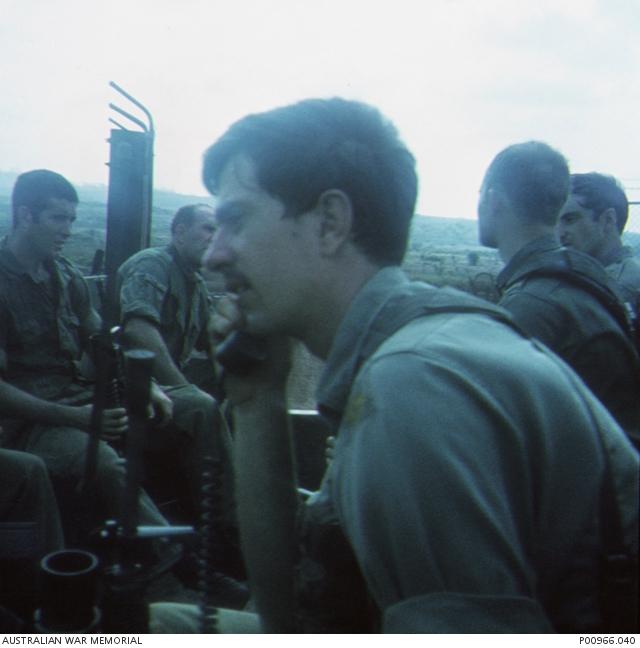
Don Barnby served as a patrol signaller in Vietnam.
But there were more surprises to come for the young SAS trooper.
“The chopper came in that morning, and we got pulled out,” he said. “We knew all the pilots, and he yelled out, ‘Happy 21st, buddy,’ over the noise of the chopper. He pointed down and there was a hot box, and when we took the top off … there were two bottles of French champagne. They had sent that out from the squadron because they knew it was my 21st.”
For Barnby, it was particularly special.
“It was the best 21st,” he said, laughing. “That night I put 21 dollars over the bar, and a beer was 10 cents – so it was a lot of beers, and I remember, after a few beers … they rolled me out of the boozer…
“About three o’clock in the morning I woke up, and there’s this little spider monkey trying to take my boots off … The little buggers would come out of the bamboo, and they’d pinch stuff out of our tents, but I woke up, and thought, ‘What?’ They’ve got little white faces, and I looked down, and he was unlacing my boots. Incredible.
“And then mum’s cake turned up three months later, all mouldy, so we cut it with a machete – sch, sch, sch, sch – and we ended up getting about a square … It was a fruitcake, and it had just grown by itself. So that was my 21st … it was an incredible 21st birthday.”
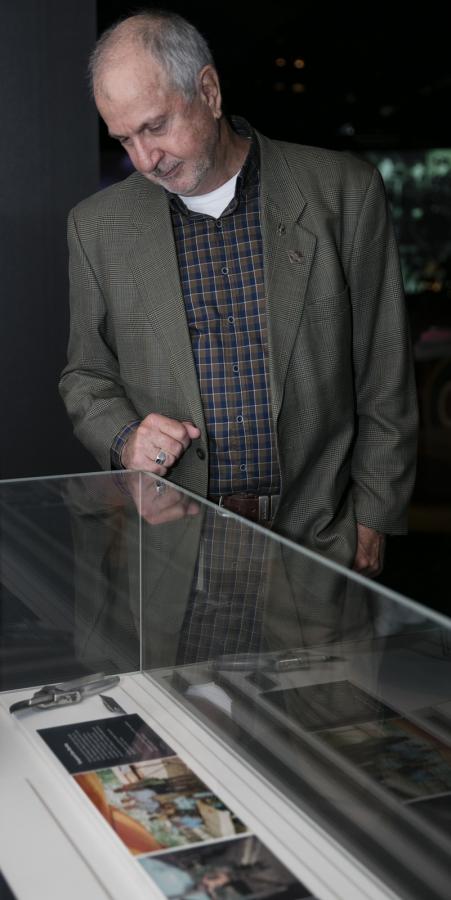
Don Barnby at the launch of the new exhibition.
More than 40 years later, Don Barnby’s story is told as part of new exhibition at the Australian War Memorial, A lifetime of service for Australia.
The exhibition tells the stories of men and women who have served in multiple conflicts or theatres of operation from the Boer War to Afghanistan.
As a policeman’s son from country New South Wales, Barnby knew all about living a life of service.
His own story of service began when he joined the army in 1967.
“I was in ordnance, and I wasn’t very happy with my employment at that stage,” he said, laughing. “I didn’t really think that was appropriate for a young digger that wanted to do stuff and go places.”
Not to be deterred, he joined the Special Air Service Regiment (SASR) in 1970 after passing the notoriously difficult entry selection course. Of the 75 who tried, only four were selected.
“It was pretty rugged, particularly coming from ordnance,” he said. “I was a forklift driver, and ordnance is not the normal demographic for SAS. It’s normally infantry, combat corps. I think I was only the second ordnance person ever to pass a cadre [course], and that’s currently still the case.”
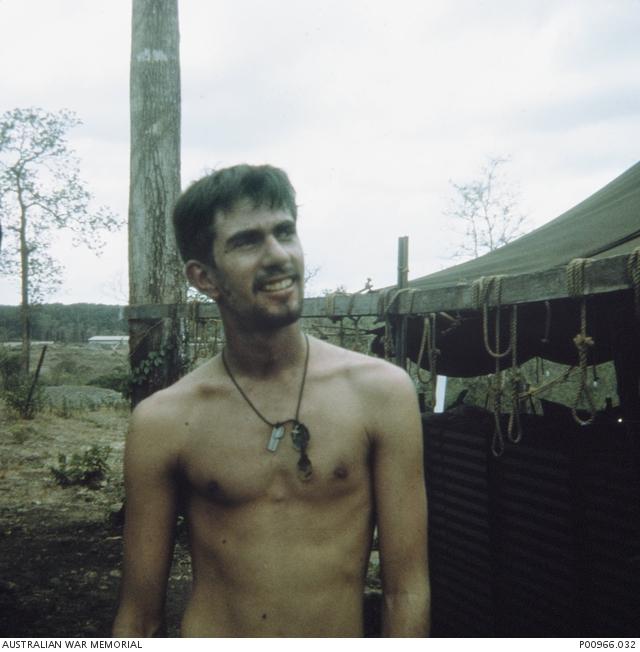
Don Barnby in Vietnam.
The following year, he was sent to Vietnam with 2 Squadron, SASR, and was based at the 1st Australian Task Force Base at Nui Dat.
“There are different reasons for different deployments, but I was 20 when I went to Vietnam, and that was for adventure,” he said. “I was silly, but that’s the reason a lot of people do stuff …
“From reading war books, and all this sort of stuff, to actually turning up in a war zone … Vietnam was pretty full on, and immediately full on.
“There were F4 Phantoms shepherding the Pan Am jet into Tan Son Nhut in Saigon, so we thought, ‘Oh well, it’s all happening,’ and it sort of didn’t stop.”
As part of the SAS, he was involved in covert reconnaissance and offensive operations against the North Vietnamese Army and Viet Cong. A pair of secateurs he used while on patrol feature in the new exhibition.
“They’re pretty special,” he said. “On SAS operations we didn’t sleep in hoochies and all that. You would just lie on the ground, but sometimes there were lots of things sticking up … so we used to use secateurs to clear a bedspace if there were lots of roots covering the ground.
“You had to carefully cut them off, but the army secateurs were pretty useless, so I wrote to Dad – in those days you had to write, there was nothing else – and said, ‘Could you send me a really good pair of secateurs, because I need them?’
“We didn’t cut our way through the jungle, it was literally just to clear bits back. They’ve never been used since... I haven’t used them since Vietnam, but I kept them. I’m a bit of a bower bird, and I kept a lot of things. I just kept stuff and threw it in a trunk, and I must admit I never looked at it.”

Don Barnby turned 21 in Vietnam.
Years later, he donated the trunk to the Memorial, and items from his collection are now displayed in the Vietnam galleries.
“I threw the trunk in the back [of the car] and … I remember standing in [the Military, Heraldry and Technology section at the Memorial]. There were people everywhere and we cracked the seal, literally, on the trunk and we opened it up … and the smell … it was like that mouldy, tropical pong … and everybody was going, ‘Ooooh… Oh.’ It hadn’t seen the light of day for quite a few years.”
He laughs as he tells the story, but the laughter stops as he talks about his time in East Timor.
After leaving the army in 1973, Barnby joined the Australian Capital Territory Police Force, which became the Australian Federal Police in 1979.
He served in numerous roles, including community policing, special operations, witness protection, police rescue, Interpol, and as part of the protection teams for Prime Minister Bob Hawke and Governor-General Sir Bill Hayden.
With the police, he deployed overseas a number times as part of peacekeeping operations, serving with the United Nations Peacekeeping Force in Cyprus and multi-national operations in Bougainville and East Timor.
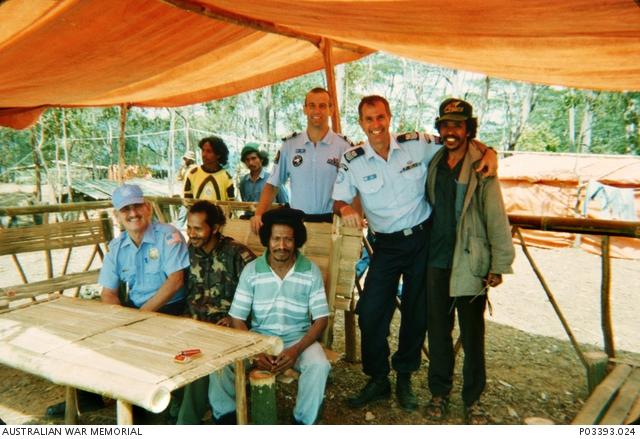
Don Barnby, second from the right, served with the United Nations Mission in East Timor in 1999.
“I had resigned from the police after 25 years, and [then] got a phone call asking if I was interested in going to Timor [to] head up the training component – and then be on the first lift into Timor in ’99 to do the referendum … So I thought about it for about three seconds and said, ‘Yes.’ It was the first time a serving member had resigned and then been brought back in with their old badge number.”
The United Nations Missions in East Timor had been sent to organise, conduct and supervise a referendum to allow the East Timorese to choose either autonomy within Indonesia or independence.
“I really thought that was quite important,” he said. “I actually thought we would make a difference. And we did. The history speaks for itself. So that was pretty important. But that was the last one. That killed me.”
Following the overwhelming vote for independence on 30 August 1999, the pro-Indonesian militia launched a campaign of destruction, arson and murder, killing approximately 1,500 people and forcing 300,000 others into West Timor as refugees. The unarmed AFP contingent witnessed the worst of the killings during their deployment, but there was nothing they could do.
“That literally broke me,” he said. “Timor was pretty tragic, and I got horribly sick – typhoid, dengue and all that sort of stuff – but mentally that was it … That was my last one, and that was by far the worst. I hit the wall after that … never to go again.”
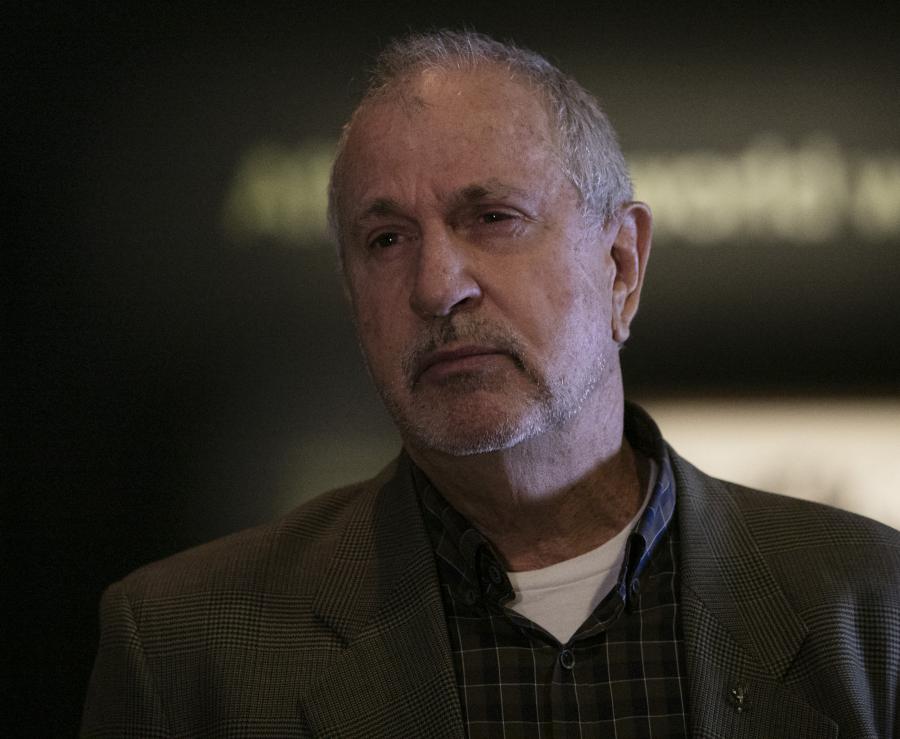
Today, he volunteers with the Photographs, Film and Sound team at the Memorial, conducting oral history interviews with veterans. It’s a role he find extremely rewarding.
“I love talking to veterans and interviewing them,” he said. “They know I’ve been there, done that … so it sets them at ease. For a lot of people, it’s the first time they’ve ever been here … and it’s the first time they’ve opened up. A lot of them do break down because it’s quite emotional. They haven’t told their wife or … they don’t talk to their mates … but they sort of open up.”
For Barnby, it’s important to record their stories and “shine a light” on their service.
A lifetime of service for Australia is on display in Anzac Hall from now until April 2019. For more details, visit here.
For more information about volunteering at the Memorial, visit here.
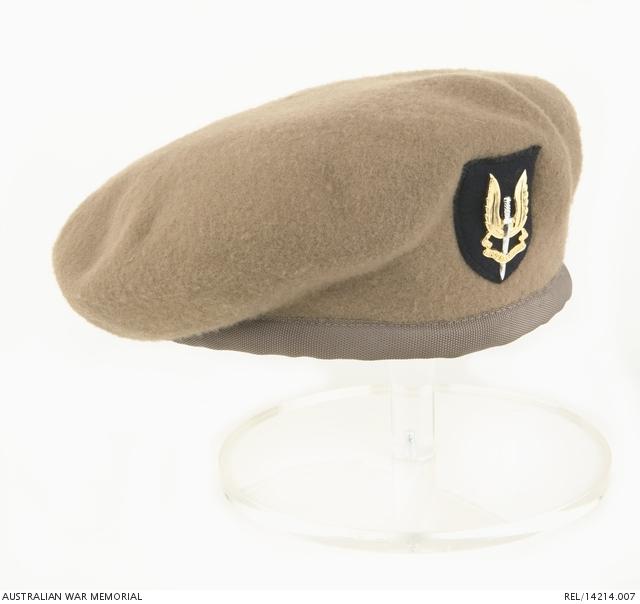
The fawn coloured beret of the Australian Special Air Service Regiment (SASR). This beret was worn by Trooper Don Barnby and is on display in the Vietnam galleries.